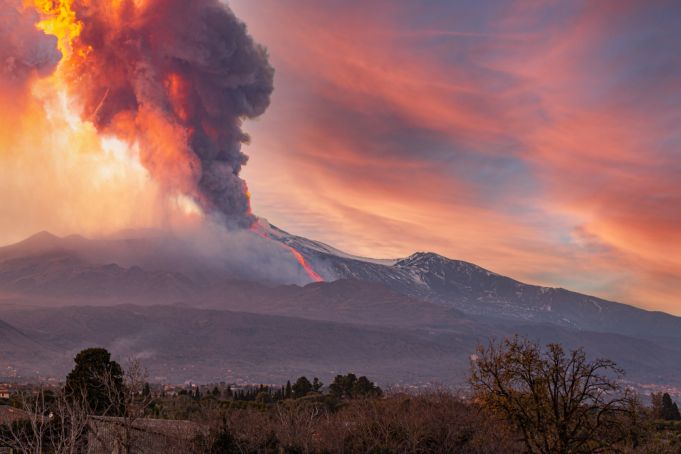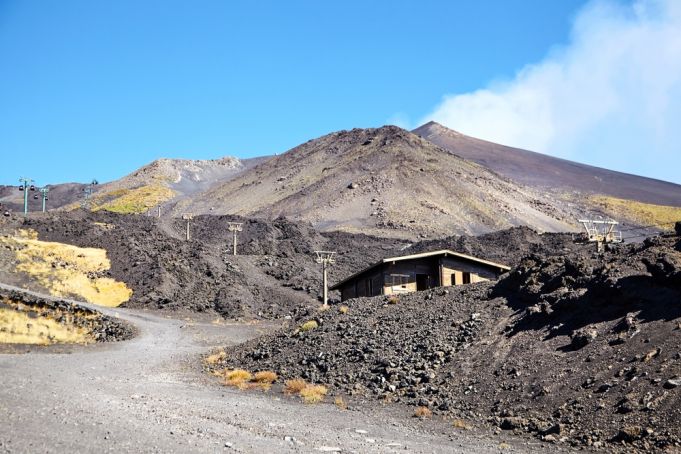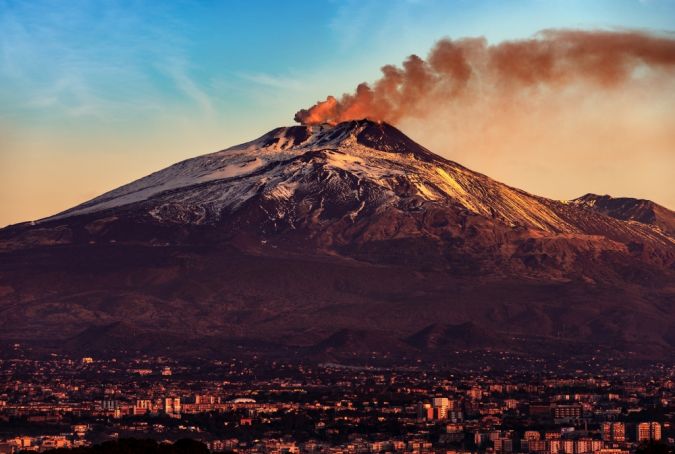Mount Etna: Sicily's fiery volcano
Exploring the history and geological significance of Europe's highest and most active volcano.
Located on the east coast of Sicily in southern Italy, the majestic Mount Etna volcano is not only a natural wonder but also a key part of the local culture and economy.
Rising approximately 3,329 metres above sea level, Mount Etna is the highest Mediterranean island mountain and the world's most active stratovolcano, meaning a conical volcano built up by many layers of hardened lava and tephra.
Etna is also the tallest volcano in Europe, with its height fluctuating due to frequent eruptions that mark its ever-changing landscape.
A brief geological history
Mount Etna's formation began around 500,000 years ago, through a series of volcanic eruptions that have continuously shaped its structure. Its geological complexity is immense, involving various types of eruptions, lava flows and pyroclastic activities. Etna sits at the convergence of the African and Eurasian tectonic plates, where the African plate is being subducted beneath the Eurasian plate. This tectonic activity is a primary driver of Etna's persistent volcanic behaviour.
Recent eruptions and volcanic activity
Mount Etna's activity has been particularly noteworthy in the 21st century, with significant eruptions occurring almost annually. Explosive eruptions can spew plumes of ash many kilometres into the sky, sometimes leading to the temporary closure the nearby Catania airport. These eruptions are a constant reminder of Etna's volatile nature and the need for ongoing monitoring and research.
Italy's National Institute of Geophysics and Volcanology (INGV) maintains a close watch on Etna, using an array of modern technologies including seismographs, satellite imagery and ground deformation measurements. These tools help scientists predict potential eruptions and assess the risks to surrounding communities.
Ecological and environmental significance
Mount Etna's environment is as diverse as it is dramatic. The lower slopes are fertile and lush, thanks to the nutrient-rich volcanic soil that supports extensive agriculture. Vineyards and orchards are abundant, producing some of Sicily's finest wines and fruits. The Etna DOC wine region is particularly renowned for its unique, mineral-rich wines.
The volcano is also a haven for wildlife, including various species of birds, mammals, insects and fauna adapted to its unique conditions. The diverse habitats created by Etna's varying altitudes and microclimates contribute to its rich biodiversity.
Cultural and economic impact
Mount Etna has played a central role in the lives of the Sicilian people for millennia. It is woven into local mythology and history, with the ancient Greeks believing it to be the forge of Hephaestus, the god of fire and metalworking. The name "Etna" itself is thought to derive from the Phoenician word "attuna," meaning "furnace."
The volcano's frequent eruptions have both devastated and benefited the local communities. While eruptions can destroy property and disrupt daily life, the fertile soil they leave behind has made the surrounding region one of the most productive agricultural areas in Sicily.

Scientific research and future challenges
Mount Etna is a natural laboratory for volcanologists and geologists. Its frequent eruptions provide invaluable data on volcanic processes, contributing to a better understanding of how volcanoes behave and how their activity can be predicted. Research on Etna also has broader implications for understanding other active volcanoes around the world.
However, studying and living near an active volcano comes with significant challenges. Ensuring the safety of residents and visitors requires constant vigilance and preparedness. Evacuation plans, public education and real-time monitoring are crucial components of disaster management strategies.
Climate change adds another layer of complexity. Changes in global temperatures and weather patterns can affect volcanic activity, potentially altering the frequency and intensity of eruptions. Understanding these interactions is an ongoing area of research, with Mount Etna serving as a key site for such studies.
General Info
View on Map
Mount Etna: Sicily's fiery volcano
Mount Etna, 95012 Castiglione di Sicilia, Metropolitan city of Catania, Italy


















